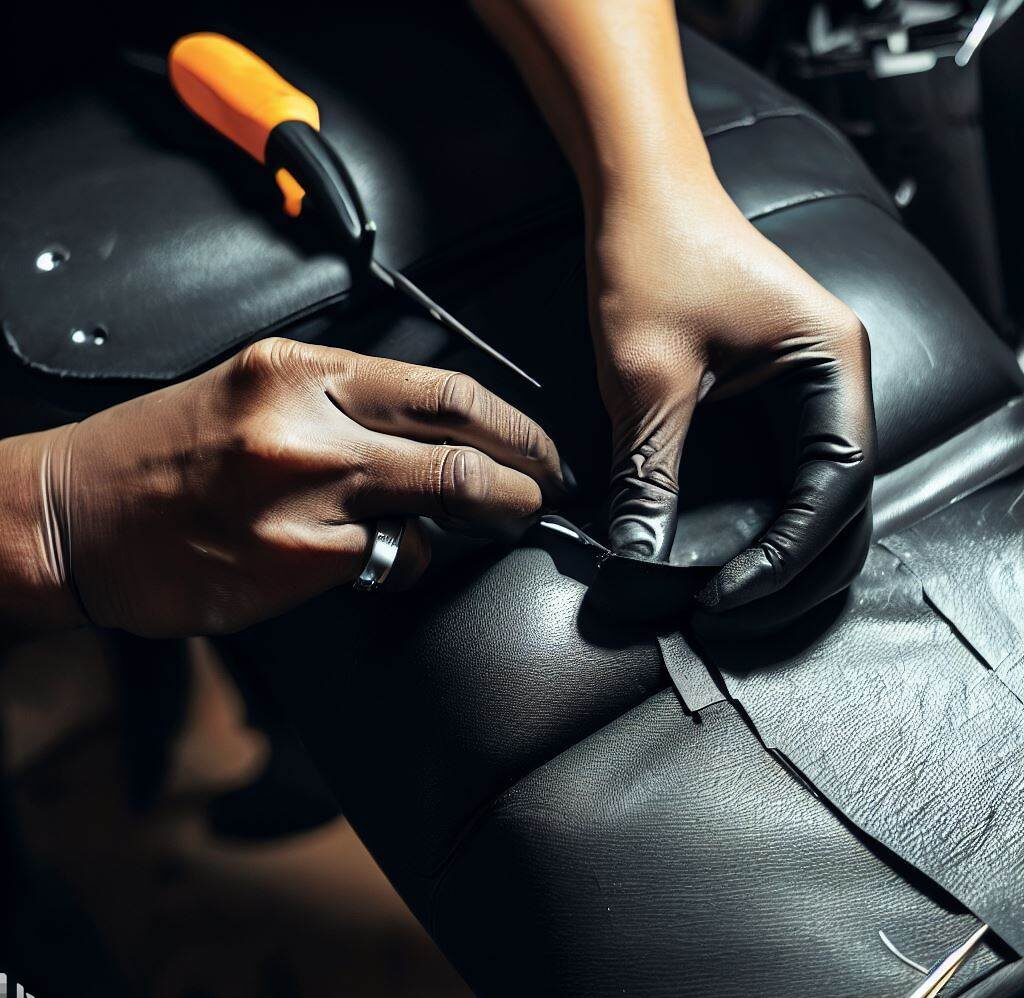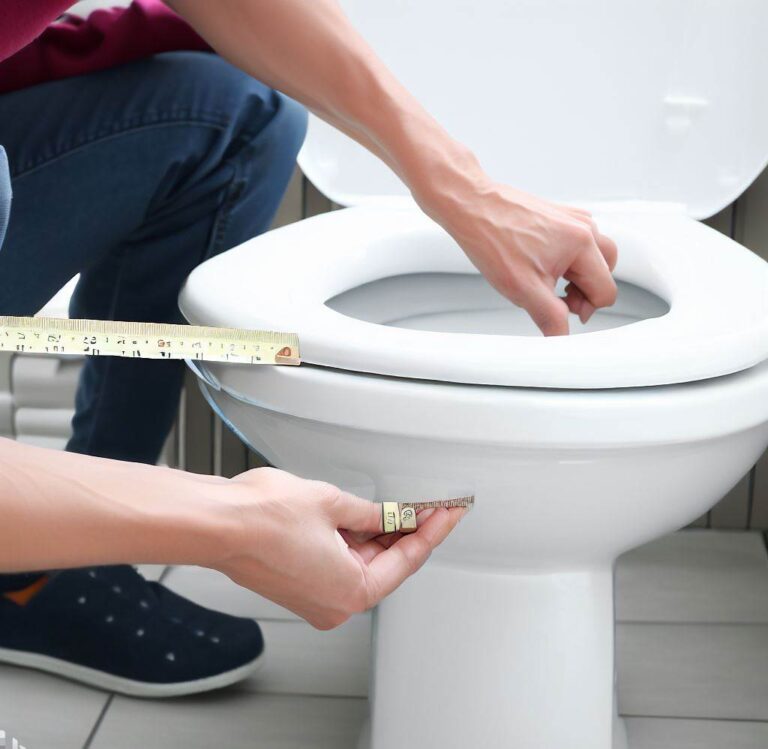How to Fix Leather Car Seats: A Comprehensive Guide to Repair and Maintenance

Leather car seats can add style and comfort to any vehicle, but they may show signs of wear and tear over time. Whether it’s a small tear or a large rip, fixing leather car seats can be challenging, especially if you don’t have the right tools and techniques.
This article will show you how to fix leather car seats using different products and techniques, from leather fillers to heating pads. We will go over all the necessary information to repair your car seats like a pro, so let’s get started!
The Importance of Maintaining Leather Car Seats:
Leather car seats require regular maintenance to prevent damage and ensure that they remain in top condition. Regular cleaning, conditioning, and repair are crucial to maintaining the appearance and integrity of the leather. Neglecting to take care of your leather seats can result in cracking, tearing, and discoloration, all of which can be costly to repair.
Common Types of Damage to Leather Car Seats:
Leather car seats can suffer from several types of damage, including cracks, tears, scratches, and discoloration. These types of damage can occur due to regular use, exposure to sunlight, and neglect to clean and condition the leather.
The process of repairing leather car seats involves the following:
- Inspecting the damage.
- Gathering the necessary materials.
- Cleaning the leather.
- Repairing tears and cracks.
- Restoring the leather.
- Finishing the job.
Each process step is essential to ensure that your car seats are properly repaired and restored.
The Benefits of DIY Repairs:
DIY repairs can save money and give you a sense of satisfaction knowing that you repaired your car seats. Moreover, DIY repairs can be completed relatively quickly and easily with the right tools and materials.
Assessing the Damage:
Before you begin repairing your leather car seats, it’s essential to assess the extent of the damage.
- Inspecting the leather car seats
- Identifying tears, cracks, and other damage
- Determining the extent of the damage
- Deciding whether to repair or replace the seats
Gathering the Materials
To repair leather car seats, you will need a set of tools and materials that are specifically designed for the job.
A list of tools and materials
- These include leather repair kits, cleaning solutions, and a variety of other tools.
- The best products for cleaning, conditioning, and repairing leather car seats
- Choosing the right leather repair kit for your needs
- Where to source materials for the repair job
Cleaning the Leather
Proper cleaning of the leather is crucial before any repairs are made. Deep cleaning is necessary to lift dirt from deep within the leather, making it easier to repair the surface. Special attention should be given to areas that are heavily soiled or discolored.
- How to Prepare the Leather for Repair: Before beginning any repairs on your leather car seats, it’s essential to prepare the surface properly. This involves removing any loose debris or dirt from the seats, as well as cleaning and conditioning the leather to ensure that the repair job is successful.
- Deep Cleaning the Leather Seats: Deep cleaning is an essential part of leather car seat maintenance, as it helps to remove dirt and grime from deep within the leather fibers. A specialized leather cleaner can be used to achieve this, along with a soft-bristled brush to gently scrub the surface.
- How to Lift Dirt from Deep within the Leather: To lift dirt from deep within the leather, a microfiber towel can be used to gently wipe the surface. Alternatively, a vacuum with a soft-bristled attachment can be used to remove dirt and debris from the crevices.
- Making it Easier to Clean the Leather Surface: Regular conditioning of the leather car seats can make it easier to clean the surface. A high-quality leather conditioner can be applied to the seats after each cleaning, helping to protect the surface from damage and preventing future stains and discoloration.
Repairing Tears and Cracks
Small tears can be repaired with a leather patch, while larger tears require a leather filler. The color of the patch or filler should match the seat to make the repair job less noticeable. Gashes and tears can be repaired with a liquid leather product, while cracks can be filled in with a leather filler.
Restoring the Leather
Leather car seats can lose their color and texture over time due to wear and tear. Restoring the leather is an essential part of car seat maintenance, and it can be accomplished using various techniques.
Applying Leather Dye to Restore the Color of the Seats:
The leather dye can be used to restore the color of leather car seats that have faded or become discolored over time. Before applying the dye, the leather should be cleaned and conditioned to ensure that it’s free from dirt and debris. Following the manufacturer’s instructions, the dye can be applied with a soft-bristled brush.
Applying a Leather Conditioner to Restore the Texture of the Seats:
Leather conditioner is an essential product for restoring the texture of leather car seats. It helps to keep the leather soft and supple, preventing it from becoming stiff or cracked over time. After cleaning the seats, a high-quality leather conditioner should be applied using a soft cloth or applicator pad.
How to Use Heating Pads and Gloves to Restore Leather:
Heating pads and gloves can be used to restore leather car seats that have become stiff or cracked due to age or neglect. The heat helps to soften the leather and make it more pliable, making it easier to repair or restore. The heating pad should be applied to the seat for several minutes, followed by a gentle massage with a soft cloth or sponge.
Applying a Shine Armor Product to Give the Seats a Glossy Finish:
Shine armor products can be used to give leather car seats a glossy finish, enhancing their appearance and making them look new. After cleaning and conditioning the seats, the product should be applied using a soft cloth or applicator pad. The product should be buffed gently, following the manufacturer’s instructions, to achieve the desired shine.
Finishing the Job
After repairing and restoring leather car seats, it’s important to maintain them properly to ensure their longevity and continued good looks. Here are some tips for finishing the job and keeping your leather car seats in great condition.
- Clean and condition your leather car seats regularly
- Shield from exposure to direct sunlight and extreme temperatures.
- Address any issues promptly to prevent further damage.
- Use products specifically designed for automotive leather.
- Avoid sharp objects that can scratch or tear the leather surface.
The Importance of Ongoing Maintenance:
Ongoing maintenance is crucial for leather car seats, as neglecting them can lead to costly repairs or even replacement. Regular cleaning, conditioning, and repair can prevent damage from occurring and extend the life of the seats.
Common Mistakes to Avoid During the Repair Process:
During the repair process, it’s important to avoid using the wrong products or techniques, as this can lead to further damage or a poor repair job. Common mistakes include using a regular leather cleaner on car seats, using harsh cleaning products, and not matching the color of the repair patch or filler to the seat.
Conclusion
In conclusion, maintaining leather car seats is essential to ensure their longevity and overall appearance. Regular cleaning, conditioning, and repair are crucial, and DIY repairs can save you time and money. By following the steps outlined in this guide, you can successfully repair and maintain your leather car seats.
FAQs
-
Is it possible to repair ripped leather car seats?
Yes, ripped leather car seats can be repaired using a leather repair kit and other materials.
-
Can I use a regular leather cleaner on my car seats?
No, regular leather cleaners may not be suitable for use on car seats. It’s important to use products specifically designed for automotive leather.
-
How often should I clean and condition my leather car seats?
It’s recommended to clean and condition your leather car seats at least twice a year or more frequently if they are heavily used.
-
How long does a leather repair job usually take?
The time required for a leather repair job is determined by the extent of the damage and the specific repair method used. Simple repairs can be completed in a few hours, while more extensive repairs may take several days.
-
Is it better to repair or replace leather car seats?
It depends on the extent of the damage. Minor damage can often be repaired, while more extensive damage may require replacement.
-
What’s the best way to match the color of the leather patch or filler to the seat?
Using a color chart or seeking professional help is the best way to match the color of the patch or filler to the seat.






